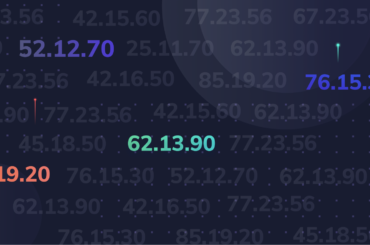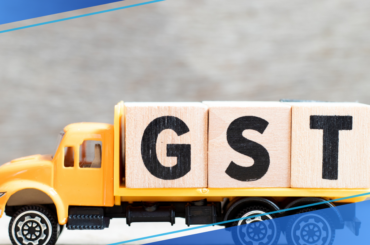Table of Contents
What is Time, Place and Value of Supply Under GST?
Under the Goods and Services Tax (GST) regime, the time of supply is when goods or services are considered “supplied.” The place of supply determines the location where the transaction occurs. The value of supply represents the monetary value of the goods or services.
Importance of Time, Place And Value of Supply
1. Time of supply
- Understanding the time of supply in GST is essential for determining when you need to pay your taxes.
- It helps you identify the exact moment a transaction is deemed to have occurred, guiding you in calculating the due date for your GST payment. Whether it’s goods or services, knowing this ensures you avoid penalties by settling taxes on time.
2. Place of supply
- It is crucial to determine if you should charge IGST or CGST/SGST. Knowing where the supply occurs, you can accurately decide the applicable GST type.
- For example, interstate transactions attract IGST, while intrastate supplies involve CGST and SGST. This ensures compliance with the law and prevents incorrect tax applications.
3. Value of supply
- Accurate calculation of the value of supply is the foundation for determining the correct GST amount.
- Miscalculating can lead to either overpayment or underpayment, which have legal and financial implications.
- By correctly calculating the value of your goods and services, you maintain accuracy in your tax liability and simplify your GST Returns filing process.
What is Time of Supply in GST?
The time of supply in GST refers to the time when goods or services are considered supplied. By establishing the time of supply, you can calculate the due date for your GST payment, ensuring you remain compliant with tax deadlines. This concept applies differently to goods and services, with specific criteria for each that you must follow closely.
Time of Supply for Goods Under GST
For goods, the time of supply is the earliest of:
- Date of invoice issued
- Last date by which the invoice should be issued
- Date when advance payment is received
Time of Supply for Goods Example
Ms. Sharma sells products worth ₹75,000 to Mr. Patel. The invoice was issued on February 10, 2025, the goods were supplied on February 15, 2025, and payment was received on February 25, 2025.
Time of Supply for the Sale: The time of supply for the sale of the products would be February 15, 2025, as this is the date when the goods were delivered to the recipient.
Time of Supply for the Advance Payment: If Ms. Sharma had received an advance payment of ₹30,000 on February 1, 2025, the time of supply for that advance would be February 1, 2025. This advance payment would be included in Ms. Sharma’s taxable turnover for the month of February, allowing her to claim input tax credit on any eligible purchases made during that month.
Time of Supply for Services Under GST
For services, the time of supply is the earliest of:
- Date of invoice issued
- Date of payment received
- Date when service is provided if the invoice is not issued within the prescribed period (30 days)
Time of Supply for Services Example
A software development company in Bengaluru provides custom software development services to a client in Mumbai. The project is completed on April 15, 2025, and the final invoice is issued on April 25, 2025. Payment is received on May 5, 2025.
Time of Supply: In this case, the time of supply for the software development services would be April 15, 2025, as the services were completed on that date. The invoice date does not affect the time of supply in this scenario.
Time of Supply Under Reverse Charge Mechanism
For reverse charge, the time of supply is the earliest of:
- Date of payment
- 30 days from the invoice date for goods
- 60 days from the invoice date for services
Note: From 15th November 2017, ‘Date of Payment’ does not apply to goods and only to services.
Time of Supply Under RCM Example for Goods
Suppose a company purchases goods worth ₹1,00,000 from a supplier. The invoice is dated 1st October 2025, and the payment is made on 20th October 2025.
- Invoice Date: 1st October 2025
- Date of Payment: 20th October 2025
- 30 days from the Invoice Date: 31st October 2025
Since the date of payment (20th October) is before 30 days from the invoice date (31st October), the time of supply will be 20th October 2025.
Time of Supply Under RCM Example for Services
A company receives legal services, with the invoice dated 1st October 2025, and makes the payment on 25th November 2025.
- Invoice Date: 1st October 2025
- Date of Payment: 25th November 2025
- 60 days from the Invoice Date: 30th November 2025
In this case, the time of supply will be 25th November 2025, as the payment was made before 60 days from the invoice date.
What is Place of Supply in GST?
The place of supply in GST refers to the location of the recipient who receives the goods or services. The place of supply under GST is crucial in determining which tax to apply—whether it’s intra-state (CGST + SGST) or inter-state (IGST). Misidentifying the place of supply can lead to incorrect tax filings and penalties.
Intra-state vs. Inter-state Transactions
Location of Service Receiver |
Place of Supply |
Nature of Supply |
GST Applicable |
| Gujarat | Gujarat | Intra-state | CGST + SGST |
| Gujarat | Rajasthan | Inter-state | IGST |
Place of Supply for Goods
The place of supply for goods typically refers to where the goods are delivered or where the ownership of the goods changes.
In cases like supermarket sales, where goods don’t move after the sale, the place of supply is where the goods are located at the time of delivery. Similarly, for goods assembled or installed, the place of supply is where the installation happens.
Place of Supply Example for Goods
If a supplier from Chennai sells and installs a heavy-duty machine for a factory in Jaipur, the place of supply for the machine would be Jaipur, even though the ownership might transfer in Chennai.
Place of Supply for Services
For services, the place of supply is typically the location of the recipient of the services. However, there are special provisions for certain types of services.
- Services related to immovable property
- Restaurant services
- Admission to events
- Transportation of goods and passengers
- Telecom services
- Banking, Financial and Insurance Services.
Place of Supply Example for Services
Example 1
Mr Kumar, based in Kolkata, provides interior designing services for a property in Shimla owned by Mr Ramesh (based in Pune). The place of supply would be Shimla, where the property is located.
Example 2
A transport company offers passenger transport services from Delhi to Jaipur. The passengers are unregistered under GST. In this case, the place of supply would be Delhi, as it is the journey’s starting point.
What is Value of Supply Under GST?
The value of supply refers to the amount the seller charges for the goods or services provided. It forms the basis for calculating the GST amount due.
When dealing with related parties or barter transactions, using the transactional value is crucial. This is the amount that would be charged if the parties were unrelated and the transaction was conducted under normal commercial conditions. This rule ensures that GST is applied correctly, even if the actual transaction value is not reflective of the market value of the product or service.
Conclusion
Understanding the place, time and value of supply is essential for accurate GST compliance. By correctly identifying these factors, you ensure that GST is applied appropriately, avoiding errors and disputes. This knowledge helps maintain regulatory compliance and supports smooth business operations and financial accuracy.
FAQs
1. What is the general rule for determining the time of supply under GST?
The general rule to determine the time of supply under GST is:
- Date when invoice is issued
- Date of payment received
- Date of supply of the goods or services
2. How is the time of supply calculated for advance payments and instalments?
- For goods, the time of supply is determined by the earliest of the following: Date of invoice issued, last date by which the invoice should have been issued, or the date when the advance or payment is received.
- For services, it is the earliest of the following: Invoice issue date, receipt date of advance or payment, or the date when the services are provided if the invoice is not issued within the prescribed period.
3. What are the specific rules for determining the time of supply for consignment sales?
The time of supply for consignment sales is the earliest of the following:
- Invoice date,
- Last date when the invoice should have been issued,
- Receipt of payment
4. How does the time of supply impact the due date for payment of GST?
The time of supply determines when your GST liability arises, which sets the deadline for payment.
5. How is the place of supply determined for goods and services?
For goods, the place of supply is typically where the goods are delivered or where ownership changes hands. When it comes to services, the place of supply is generally where the recipient is located.
6. What are the specific rules for determining the place of supply for imported goods and international services?
For imported goods, the place of supply is where the importer is located in India. International services depend on whether the supplier or recipient resides outside India.
7. How does the place of supply affect the applicable tax rate (CGST, SGST, or IGST)?
- Intra-state supplies (where both supplier and recipient are in the same state) attract CGST and SGST.
- Inter-state supplies (where they are in different states) attract IGST.
Correctly identifying this place ensures compliance with tax regulations and avoids disputes over jurisdictional taxation.
8. What is the concept of “deemed place of supply”?
A deemed place of supply refers to situations where specific provisions dictate that a transaction should be treated as occurring at a location other than where it actually takes place. This often applies in cases involving online services or specific service categories outlined in GST regulations.
9. How is the value of supply calculated under GST?
The value of supply under GST includes:
- Any taxes (excluding GST) and additional charges incurred by the supplier.
- Discounts given at or before supply can be deducted from this value.
10. What factors can affect the value of supply (e.g., discounts, rebates, incidental expenses)?
Several factors can influence this calculation:
- Discounts: Only those given before or at the time of supply can reduce value.
- Rebates: These are a type of post-supply discount, given after supply can be deducted from the taxable.
- Incidental expenses: These must be included if charged before delivery.
- Installation costs: If installation is part of a sale, these costs should also be included in determining value.
11. What are the specific rules for determining the value of supply for goods with installation or accessories?
For goods with installation or accessories, the value of supply includes not only the price of the goods but also the cost of installation, accessories, and any additional charges. This total amount is used to calculate GST. If installation or accessories are supplied separately, their value should be added to the price of the goods to determine the overall value of supply.
12. How does the value of supply impact the amount of GST payable?
The calculated value directly affects how much GST must be paid. A higher value leads to a higher GST liability, while discounts can reduce this liability. Therefore, accurate valuation is crucial for compliance and financial planning under GST.





